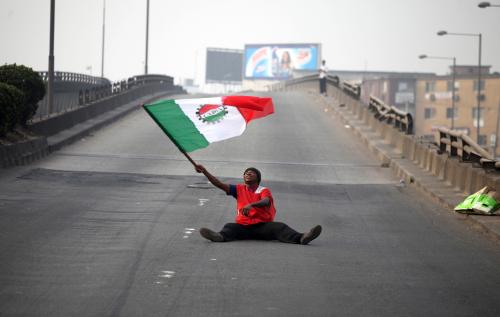In May 2020, an African-American man named George Floyd was killed after a white police officer knelt on his neck for multiple minutes during a routine arrest. The brutality of the event and others like it ignited a series of protests against racism and police brutality, and calls for distributive justice under the Black Lives Matter (BLM) movement.
More than 15 million people are estimated to have participated in the BLM protests in 2020 alone, and the protests over the past decade resulted in the 2010s being labeled the “the decade of protest.” Many of the stated aims of these protests have highlighted distributive justice claims—through for example, reparations to descendants of African slaves in the BLM movement and redistribution of economic capital in the 2011 Occupy Wall Street protests. But can protests lead to meaningful changes in government policy, particularly around the redistribution of economic resources? This is a difficult empirical question to answer partly due to the complexity of fiscal systems around the world and the paucity of data on subnational public financing. In a new study, we circumvent these empirical difficulties and address this question using evidence from Nigeria—the most populous country in Africa and the sixth most populous country in the world by United Nations estimates.
Nigeria’s highly centralized fiscal system makes it an informative region to study how governments might directly deploy fiscal resources in response to citizen-led protests. While most countries around the world operate some type of revenue-sharing scheme where, for example, the federal government disburses conditional or unconditional grants to subnational entities, Nigeria is one of more than 30 countries with revenue-sharing schemes based on revenues from natural resources. This allows us to more carefully study the effects of protests on the distribution of revenues from a plausibly exogenous source (oil in this case), where federal or central governments do not depend on subnational entities or citizens for revenue. It also allows us to study these effects under a heavily consolidated top-down revenue-sharing system where the central government can choose to respond to economic grievance-driven protests by directly disbursing fiscal resources and quelling protests. We construct a new dataset from 26 years of archival records on public finance from 1988 to 2016—assembling data on revenues and expenditures—and geocode information on protests to test our hypotheses in Nigeria. The breadth of data over these years and the richness of Nigeria’s political history also allow us to test hypotheses from the electoral politics literature on different central governments responses to protests under autocratic versus democratic regimes.
We examine the responses of federal governments to citizen-led protests in states in Nigeria, under revenue-sharing regimes where the federal government can directly control disbursement of fiscal resources to states in response to protests. We can also examine these responses under autocratic federal governments (Nigeria was under mostly military rule from around 1970 to 1999) and democratic federal governments (after 1999 in Nigeria) to examine whether autocratic and democratic governments respond to protests differently.
Our findings
We show that higher levels of protests in a state are associated with both increases and decreases in revenue transfers from federal governments to protesting states over the military and democratic periods. During the military period, protests increase one transfer outcome—called VAT transfers—by between 5.2 percent to 11.5 percent, and increase a separate transfer outcome—called allocation transfers—by 6.8 percent. During the democratic period, protests decrease allocation transfers by between 0.5 percent and 0.7 percent. We also explore political alignment, or whether the federal government leader or president and the state government leader or governor come from the same political party, as a channel that may explain the heterogeneity in the effects of protests on revenue transfers. While there is no variation in alignment in the military period due to all military state governors being direct political appointees and thus, by our definition, politically aligned with the president, we can examine results by alignment in the democratic period with the introduction of electoral politics. We find that protests increase VAT transfers in aligned areas between 4 percent to 6.6 percent but decrease VAT transfers by around 1 percent in non-aligned areas. The results on decreased allocation transfers in protesting states are almost entirely driven by protests in non-aligned states. We conduct a number of falsification tests on our results and show that there is no significant association between other conflict events and transfers. We also show that there is no association between protests and non-transfer revenue like internally generated revenue.
We find suggestive evidence that protests increase policing and police violence against protesters, particularly in states that are not politically aligned with disbursing federal governments. In contrast, protests are associated with decreased police violence against protesters in aligned states. The results provide evidence that protests can influence fiscal redistribution. The ways in which they do this depend on the political relationships within governments and between disbursing federal governments and protesting regions. Governments can also respond to protests with increased state violence against protesters.
To learn more, read the full report.





Commentary
Can protests lead to meaningful changes in government policy, particularly around economic redistribution?
April 6, 2022